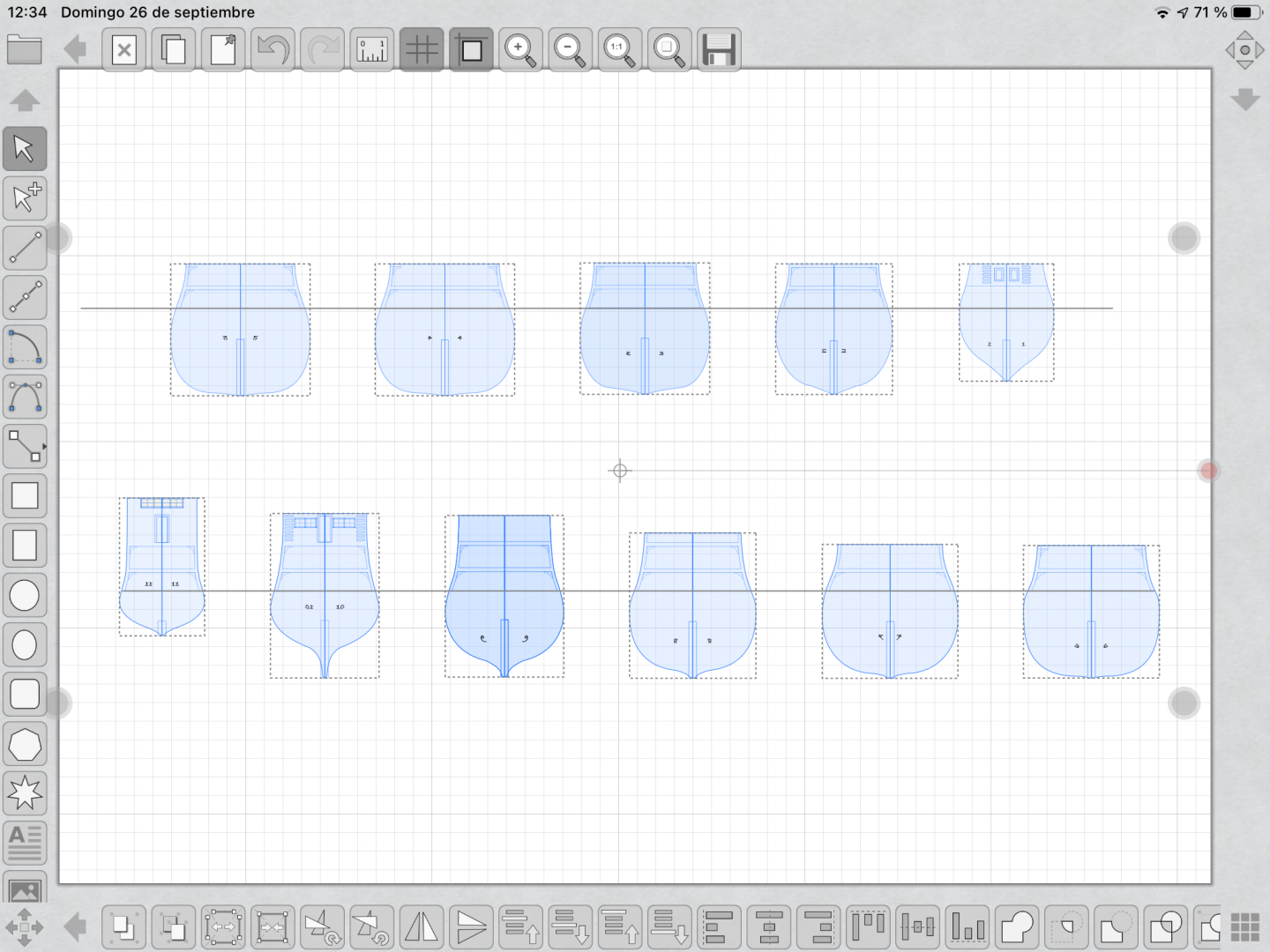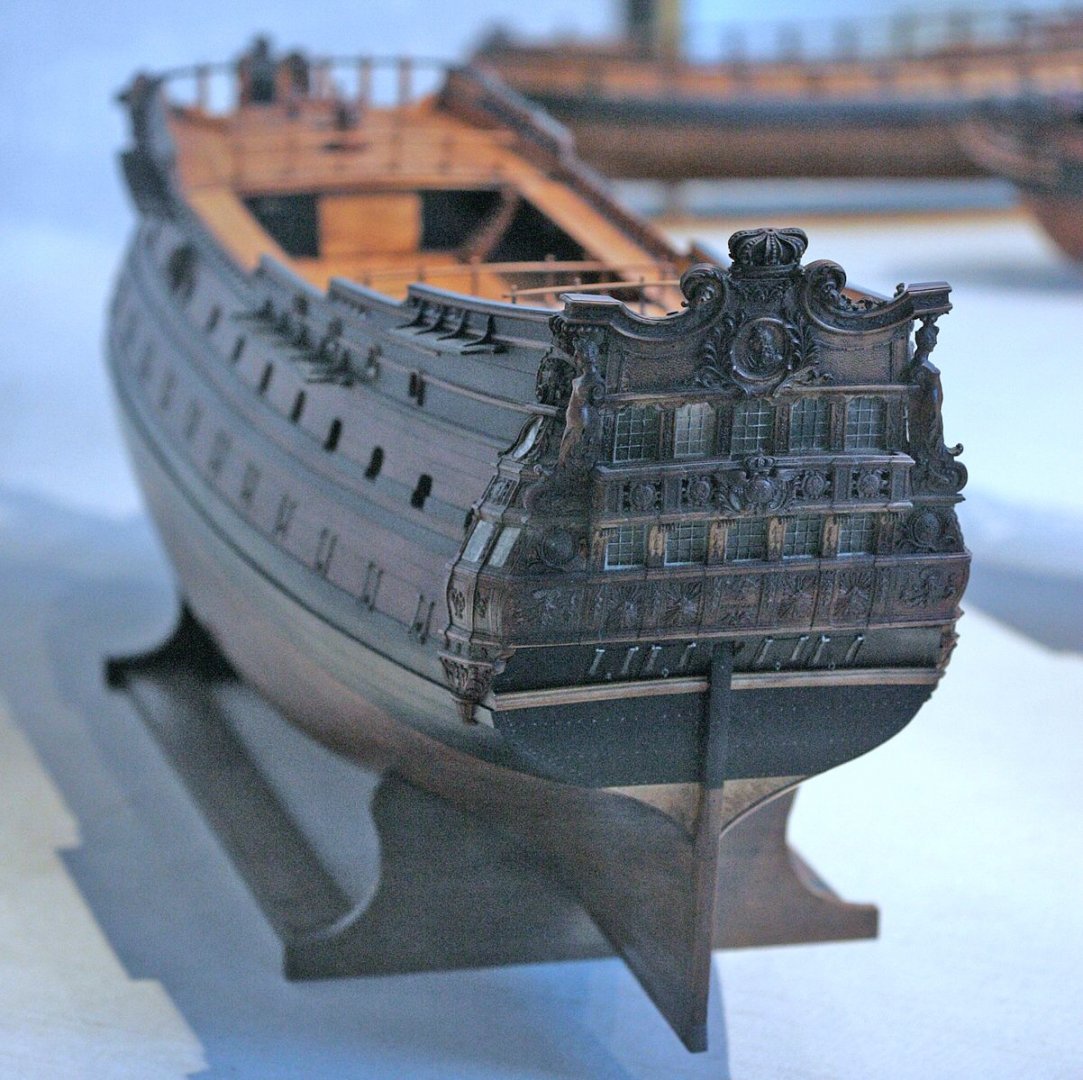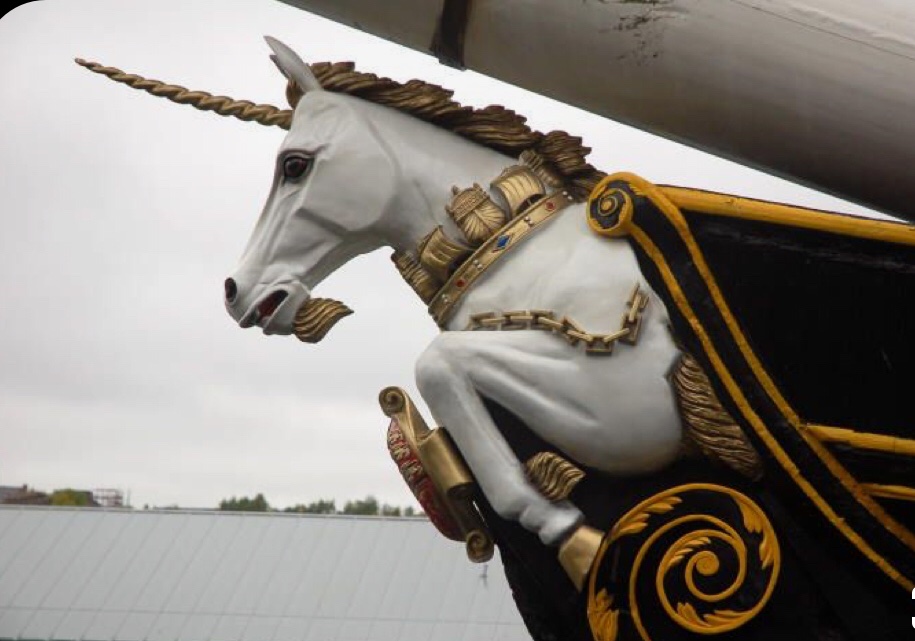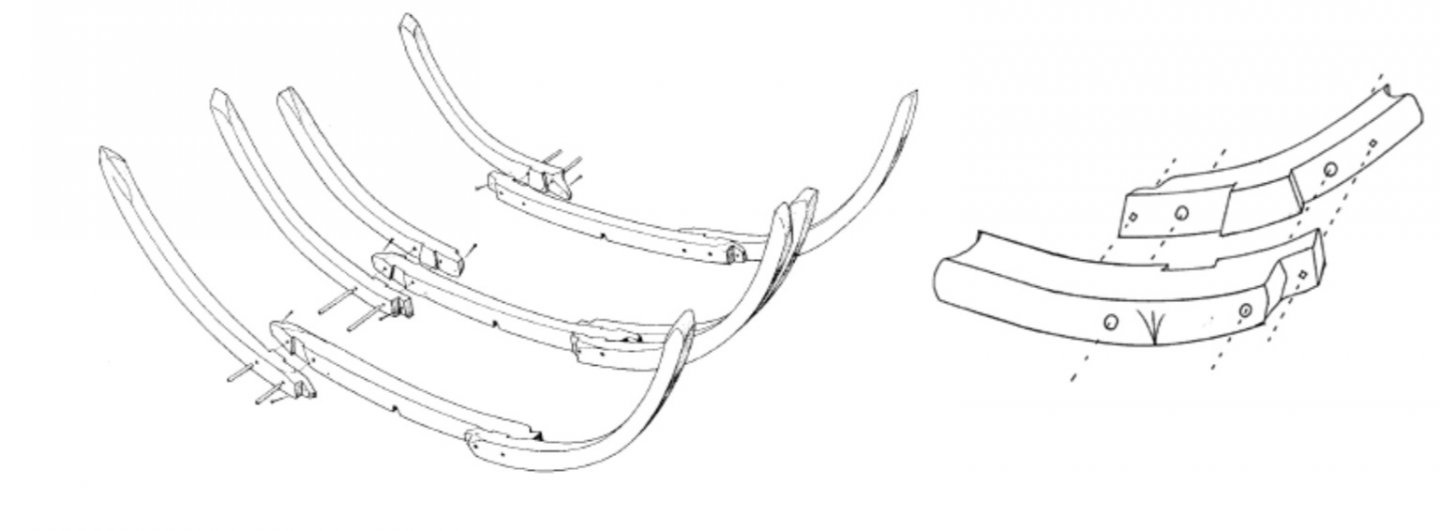The Unicorn - Preliminary study
There is no way to properly document a vessel that didn’t exist. The research must be made solely on the observations of the drawings that Hergé included in his book, and none of them gave any clue of the way the hull was constructed. Fortunately I found a book titled “Tous les secrets de La Licorne” (All of the Unicorn secrets), written by Yves Horeau, Jacques Hiron and Dominique Maricq, published by Gallimard et Éditions Moulinsart, october, 5, 2017, where they stated that Hergé used a french battleship of the Luis XVI navy, “Le Brillant” (Fig. 1) as a model for the Unicorn. In fact, both the name “Unicorn” and the bow figurehead were adopted from a british fregate, the HMS Unicorn (1824). See Fig. 2.
Fig. 1
Fig. 2
At this point I have something to start with. I can assume that the Unicorn (the fictitious one) has to be constructed using similar techniques as the ones used in Le Brillant, that is, the “overlapping ties” technique that can be seen in the XVII century French and Spanish vessels.
Starting with the basic structure, the keel, curved pieces of log were installed perpendicularly and then secured into position by using wood spikes. The log pieces were assembled with dovetails. (Fig. 3)
Fig. 3
(To be continued)






